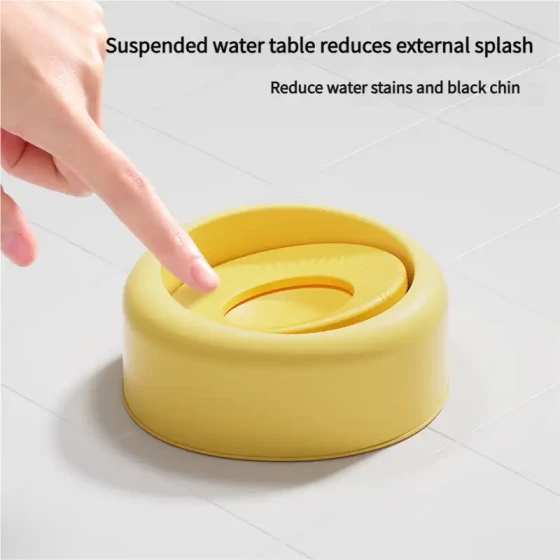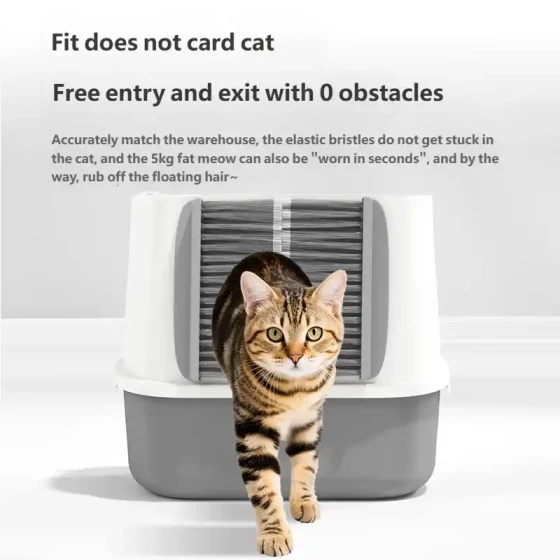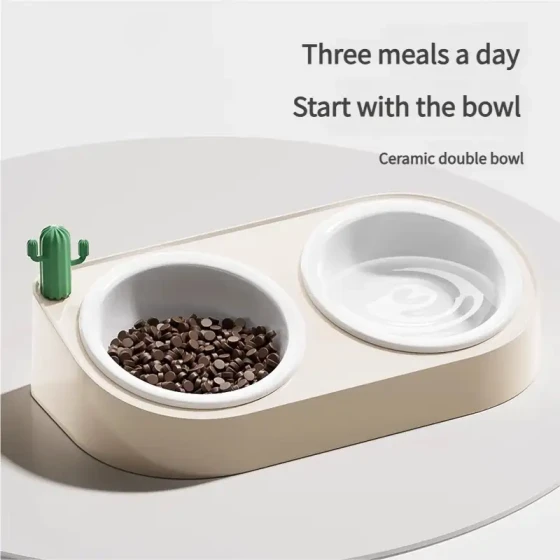How Many Grams of Cat Food Should an Adult Cat Eat Per Day_Scientific Feeding Guide Helps You Accurately Control the Intake
How many grams of cat food should an adult cat eat per day? The answer to this question is not fixed; it requires consideration of many "personalized" factors, just like making a diet plan for ourselves. Generally, the daily feeding amount for an adult cat depends on its weight, age, activity level, metabolism, and the energy density of the cat food itself (how many calories per gram). The most direct and reliable method is to refer to the feeding guidelines on the packaging of the cat food you purchase and adjust according to your cat's actual physical condition.
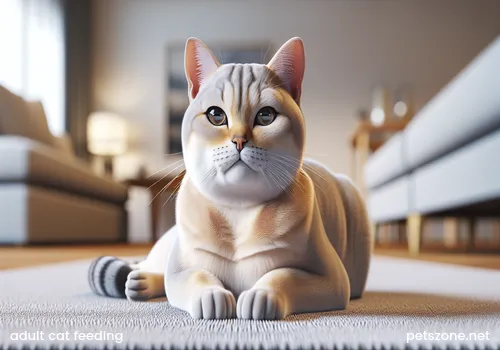
Scientific feeding is like tailoring a nutritious meal for your cat—too little may cause malnutrition, too much can lead to obesity and affect health. Therefore, understanding the key factors influencing feeding amounts is crucial.
Key Factors Affecting the Feeding Amount of Adult Cats
Determining how much cat food a cat needs daily is not a decision made on a whim. We need to consider the following main aspects:
- Body Weight and Body Condition Score (BCS)
Just like humans come in different body shapes, cats do too. Veterinarians typically use Body Condition Score (BCS) to assess a cat's body fat, using a scale from 1 to 9, with 5 being ideal. A cat weighing 4 kg with a balanced body shape (BCS 5) has different daily energy needs compared to a 4 kg cat that is overweight (BCS 7 or 8). Overweight cats need to reduce their feeding amount appropriately to control weight, while underweight cats may need to increase. - Age and Life Stage
Although the title is "adult cats," adults include young adults and seniors. Generally, active young adult cats require more energy than less active senior cats. Senior cats may have slower metabolism or health problems affecting appetite or nutrient absorption, thus their feeding amounts need special attention and sometimes require switching to senior cat food. - Activity Level
This is a very important factor! A "couch potato" cat sleeping all day with minimal exercise and an active cat that loves running, playing, and exploring have vastly different energy needs. Active cats require more energy and naturally eat more. Indoor cats usually have lower activity levels than free-roaming or outdoor cats. - Metabolism
Every cat is an individual, and their metabolic rates differ. Some cats are naturally "how much they eat doesn't make them gain weight" (enviable!), while others may gain weight just drinking water. This is similar to what we experience in friends. Cats with slower metabolism need more precise control of feeding amounts. - Type and Energy Density of Cat Food
Different brands and formulas vary significantly in nutrition and energy density. Some cat foods contain more calories per gram, requiring smaller feeding amounts; those with lower energy density may require more. This further emphasizes the importance of checking feeding guidelines on cat food packaging. High-quality cat food is usually more balanced nutritionally, which may mean smaller feeding amounts still meet needs. - Whether Neutered or Spayed
Neutering affects a cat’s endocrine system and metabolism, usually slowing metabolism and reducing activity but possibly increasing appetite, making neutered cats more prone to obesity. Therefore, neutered cats often require adjusted feeding amounts or specially designed cat food. - Health Condition
If the cat is sick, its appetite may decrease or it may require special nutritional support. For example, cats with kidney disease may need prescription food low in protein and phosphorus, with different feeding amounts. Any abnormal appetite or significant weight changes should prompt consulting a veterinarian promptly.
How to Determine Feeding Amounts Relatively Accurately?
With so many influencing factors, how can we relatively accurately figure out how many grams of cat food our adult cat should eat per day?
- Consult the feeding guideline on the cat food packaging
This is the starting point and the most basic reference. Cat food manufacturers provide a recommended feeding chart or instructions based on weight and target cat groups (e.g., adult cats, senior cats, neutered cats) according to the energy density of their products. For example, some cat food may recommend feeding a 4 kg adult cat about 50-60 grams daily.
Please note: This guideline is an average value and should be adjusted according to the individual differences mentioned above. - Observe your cat's body condition
This is key for adjustment. Regularly feel your cat’s sides: if you can easily feel the ribs but cannot see their outline, it usually means the body condition is moderate. If ribs are hard to feel, the cat might be overweight; if ribs are clearly visible, it might be underweight. From above, the waist behind the ribs should have a noticeable tuck. - Monitor weight changes
Regularly (e.g., once a month) weigh your cat at the same time using a pet scale or by weighing yourself holding the cat, and record the weight changes. If weight steadily rises or falls, feeding amounts need adjusting. - Consider activity level
If your cat is a little energetic runner jumping around all day, you can increase feeding slightly; if a "bedridden" lazy cat, feeding should be reduced. Try starting from the lower limit on the package recommendations and observe for a period. - Feed multiple small meals
Feeding 2-3 meals a day is better for digestion and blood sugar stability than one large meal. Divide the daily total feeding amount into several portions and feed at regular times and quantities. - Use measuring cups or scales
Don’t pour cat food by feel! Different cat foods have different kibble sizes and density; filling the same cup may vary widely in weight. Use a kitchen scale or a specialized pet food scale to accurately weigh the daily total feeding amount and divide it into meals. This helps better control total intake.
For example, suppose your cat weighs 4 kg, has a moderate build, and average activity. Your cat food packaging recommends feeding 55 grams daily for a 4 kg adult cat. You can start at 55 grams daily and observe your cat’s weight and body condition. If the cat’s weight begins to increase after some time, reduce the amount slightly, for example to 50 grams daily; if the cat loses weight or looks thin, increase slightly, for example to 60 grams daily.
Frequently Asked Questions
- My cat always seems hungry—is it not being fed enough?
Cats may show hunger signs for many reasons, such as cravings, seeking attention, or because the food tastes very good. If feeding according to the recommended amount and the cat’s body condition is normal, the cat may not actually be hungry. You can try increasing playtime or using slow feeders and puzzle toys to make eating more fun and extend eating time. However, if the cat’s weight is dropping or remains consistently thin, consult a veterinarian to exclude health issues. - Is free feeding (leaving food out all day) okay?
For some cats that can self-regulate their intake, free feeding is possible, but for cats prone to overeating, it may cause obesity. Scheduled, measured feeding is usually better, especially for neutered cats or those prone to gaining weight. - Can dry and wet food be fed together?
Yes. Wet food helps increase water intake and benefits urinary system health. When feeding both dry and wet food, calculate total caloric intake and reduce either dry or wet food accordingly to avoid exceeding caloric needs and causing obesity. - What should be noted when switching cat food?
Suddenly changing cat food may cause gastrointestinal discomfort, vomiting, or diarrhea. It is recommended to use the "seven-day transition method," mixing old and new cat foods gradually over about a week until the new food fully replaces the old.
When to Consult a Veterinarian?
If you are confused about determining your cat’s feeding amount, or if your cat shows any of the following signs, timely consultation with a veterinarian is advised:
- Sudden weight gain or loss.
- Significant increase or decrease in appetite.
- Vomiting, diarrhea, or other digestive symptoms.
- Lethargy or unusual behaviors.
- Uncertainty about the cat’s body condition score.
Veterinarians will provide more professional feeding advice and customized feeding plans based on your cat’s breed, age, health condition, lifestyle, and other specific factors.
Summary
Determining how many grams of cat food an adult cat should eat daily involves considering multiple factors. Although the feeding guidelines on cat food packaging provide a basic reference, each cat is unique with different actual needs. As responsible owners, we should closely monitor our cats' weight and body conditions, and flexibly adjust feeding amounts according to their activity level and life stage. Remember, precise feeding is a fundamental key to a cat’s health and longevity. If in doubt, seek help from professional veterinarians—they are your most reliable partners on the path of scientific feeding.
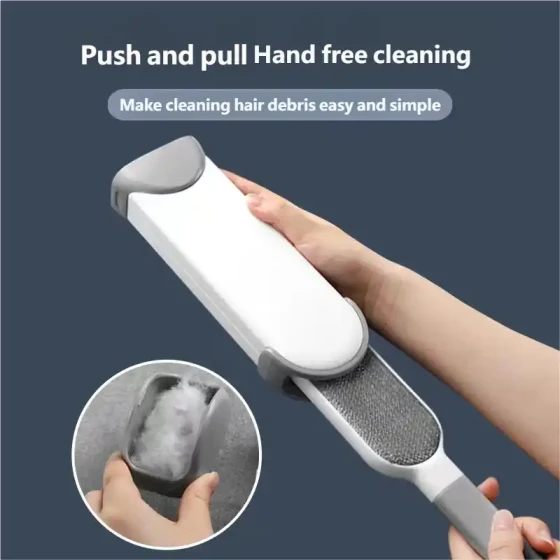
-1-560x560.webp)
-560x560.webp)
